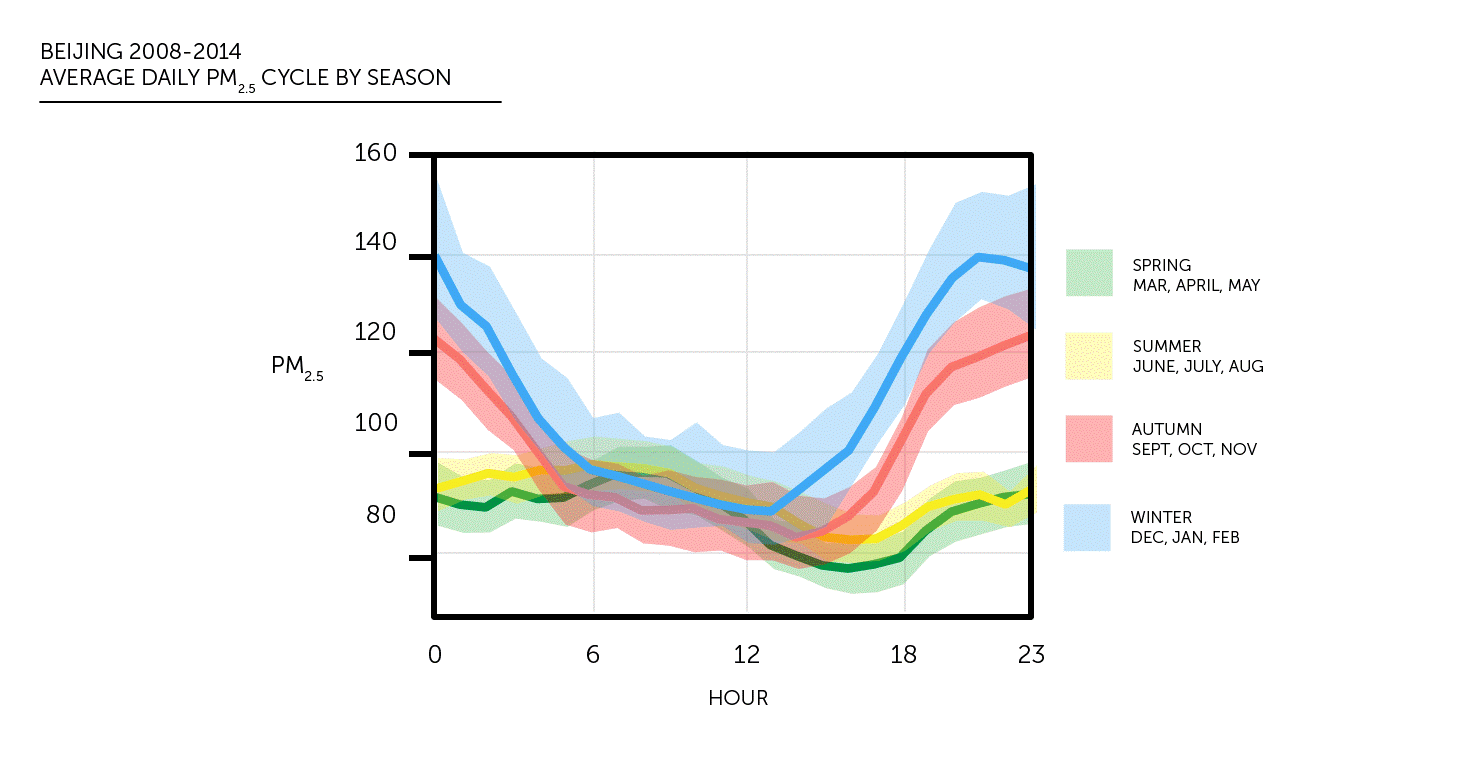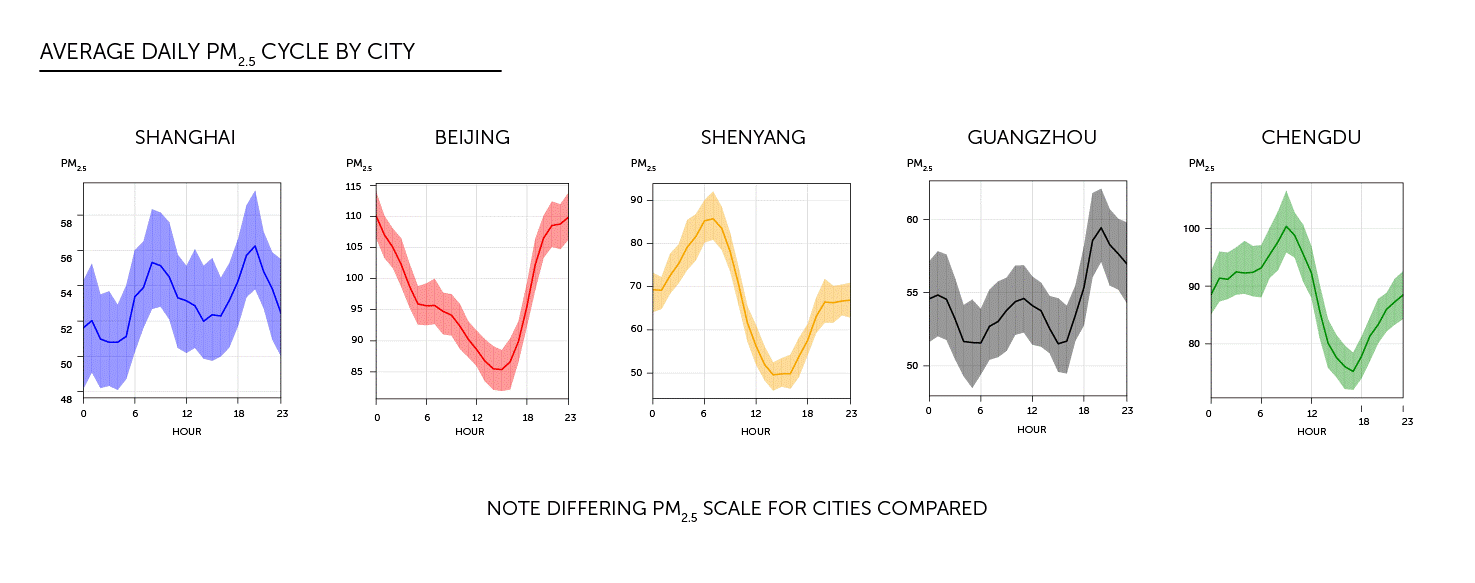Earlier this week a report by Greenpeace revealed that levels of PM2.5 within China now contribute to more premature deaths than smoking. Figures state PM2.5 accounts for an average of 90 deaths per 100000 people, 20 more than smoking which stands at 70 per 100000. The studied incorporated a review of 31 cities and highlighted the relative danger present in each area. It was noted that despite the high mortality contribution, the study was missing some of the most polluted cities which are likely to have a greater impact. These figures provide evidence of the macro problems associated with air pollution in major cities. Another interesting area of analysis is at the micro level assessment of daily and seasonal patterns of PM2.5 concentrations.

Research by Collective Responsibility utilized data available from the US Department of State[1] to assess trends for 5 major Chinese cities. The investigation exposed the varying concentrations present on both a seasonal and daily level. Many who reside in major Chinese cities will be aware of the seasonal variation in air pollution. Indeed, particularly bad days lead to a reduction in visibility and as a result, the problem is obvious. However, fewer people may be aware of the increased vulnerability they face based on the time of day they are exposed. These daily cycles are city dependent and the patterns become far more extreme in the winter months. Above is data for Beijing and coupled with the higher average winter values more extreme concentration fluctuations are observed daily.

What this data highlight is that an individual’s vulnerability is not just dependent on the city that they live in but also the time of year and hour of the day in which they are exposed. As may be expected, the highest daily levels in Shanghai are during the rush hour, and as a result, those traveling to work at that time will be subject to higher levels of PM2.5. Equally, those outside during the night hours in Beijing could have far greater health impacts associated with their activity. All cities show distinct daily cycles and the range of values in each differ considerably. It illustrates the complexity of air pollution and shows that no one solution is able to account for all urban centers.
Despite the increased implementation of measures to reduce pollution levels, cities to the east, such as Beijing, face an issue that traditionally polluted cities such a London and Los Angles did not. This is the presence of the jet stream driving air masses from west to east, a phenomenon that incidentally is also more prevalent in winter months[2]. Subsequently, if the industry is shifted to the west of the country pollution generated will be driven across the country and contribute to poor air quality in the eastern regions. London and Los Angles have nothing to their west and therefore by shifting industry out of the cities the issue was solved. China is not afforded this “luxury”.
[1] It should be noted that, in accordance with the US Department of State policy, the data used is not fully verified or validated.
[2] Luo, X. S., et al. “Spatial-temporal variations, sources, and transport of airborne inhalable metals (PM 10) in urban and rural areas of northern China.” Atmospheric Chemistry and Physics Discussions 14.9 (2014): 13133-13165.
